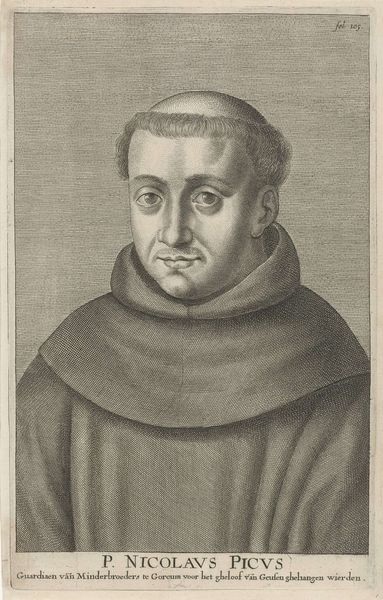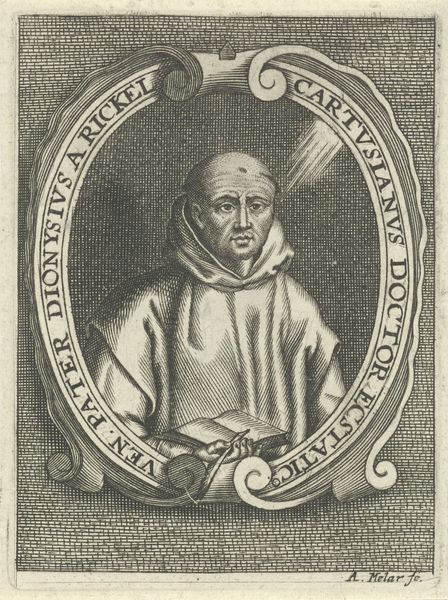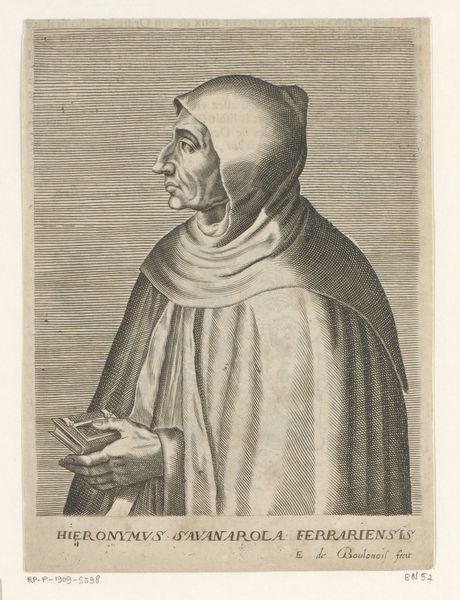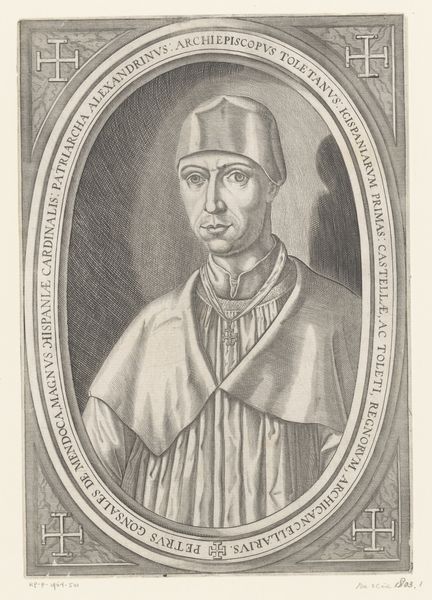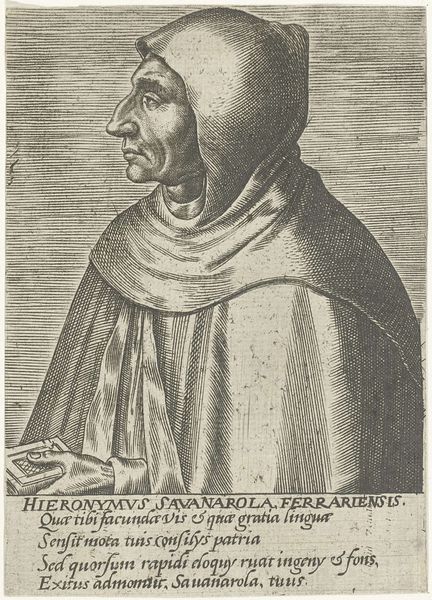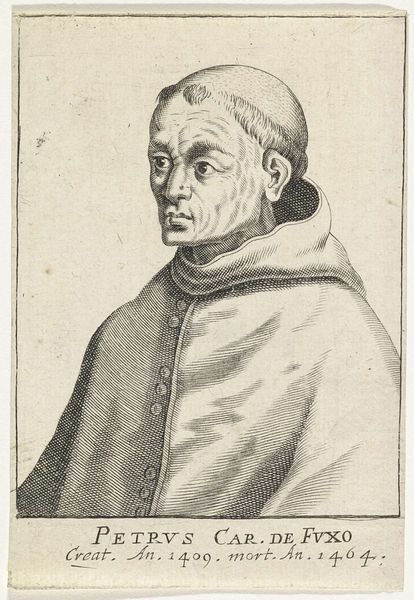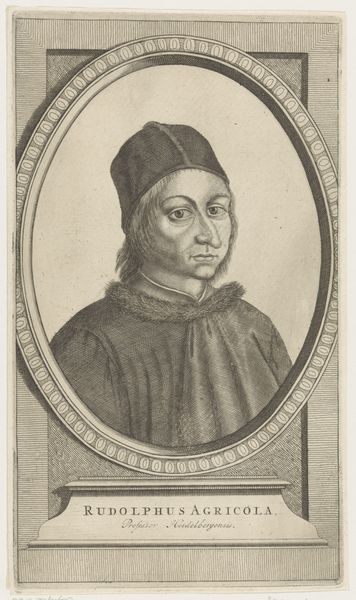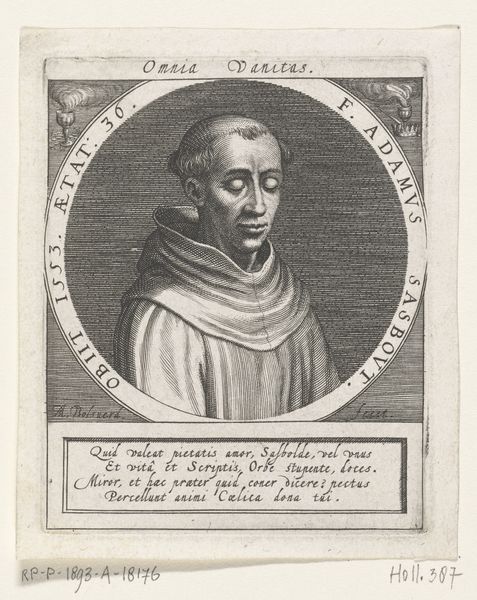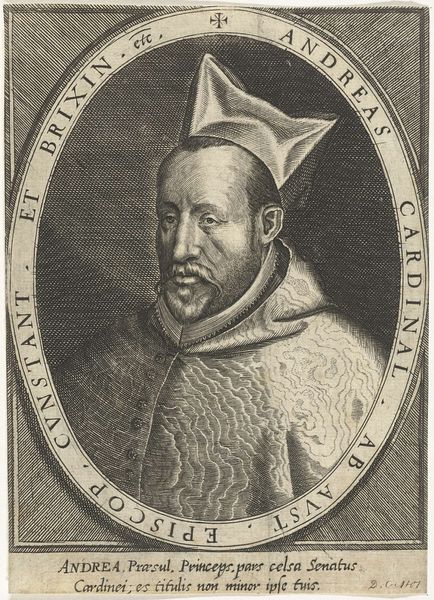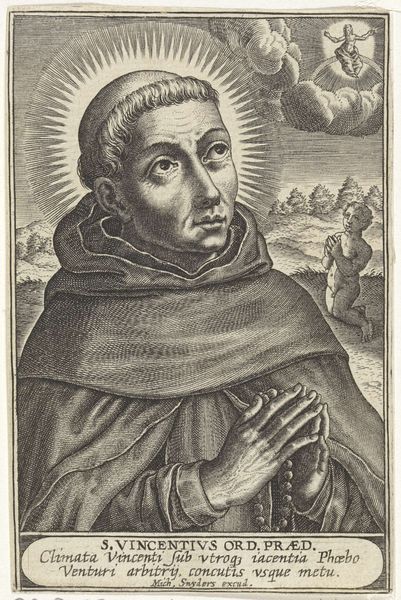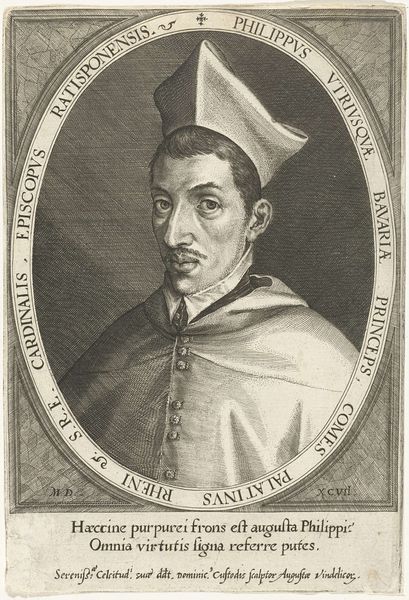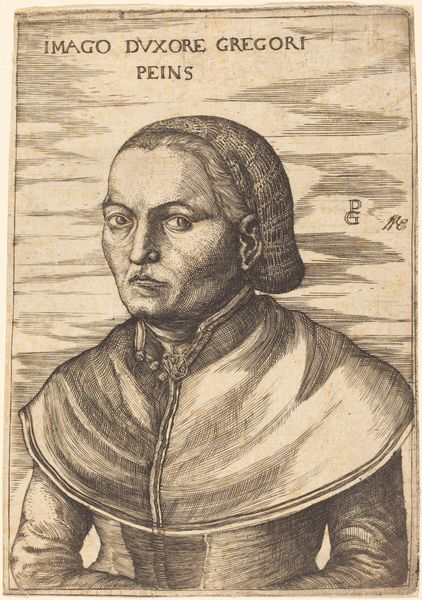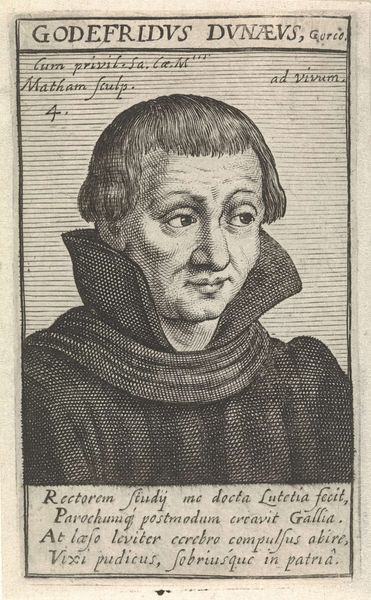
engraving
#
portrait
#
medieval
#
history-painting
#
engraving
Dimensions: height 132 mm, width 93 mm
Copyright: Rijks Museum: Open Domain
Editor: This is a portrait of the theologian Adam Sasbout, made in 1598 by Wierix. It's an engraving, with incredibly fine lines depicting Sasbout in what looks like quiet contemplation. The phrase "Omnia Vanitas" at the bottom certainly sets a contemplative mood. What symbols or meanings jump out at you when you look at this piece? Curator: The averted gaze is, of course, laden with meaning. Closing the eyes invites internal reflection, a detachment from the sensory world so associated with vanity in that era. How else might this pose affect the reading of Sasbout’s portrait? Editor: I hadn't thought about that! Maybe it's meant to show his piety, his focus on the spiritual over the material? The shield in the upper left - does that bear any significance? Curator: The coat of arms indeed would immediately resonate with the educated viewer. These visual identifiers served to solidify status and lineage, instantly embedding him within a specific social framework, hinting at the power structures in play. Considering that this portrait commemorates Sasbout's death at the young age of 36, how do you think this informs our interpretation? Editor: That gives the phrase "Omnia Vanitas" even more weight, right? It emphasizes the fleeting nature of life, power, and earthly achievements. It makes the portrait both a commemoration and a moral lesson. Curator: Precisely. It urges the viewer to question the true values they uphold, a challenge meant to linger far beyond the simple act of looking at an image. Wierix here masterfully combines visual cues with text, creating a multi-layered experience. Editor: I see what you mean! I'll never look at portraits the same way again! Thanks for your help.
Comments
No comments
Be the first to comment and join the conversation on the ultimate creative platform.
